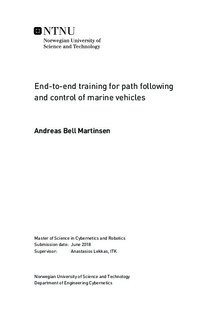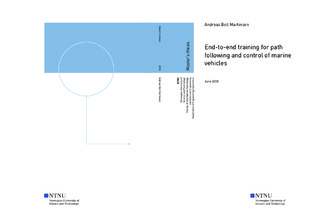| dc.description.abstract | The problem of following, or tracking a predefined path, has been a long standing problem in the control engineering community. In most cases, previous works utilized existing or newly-presented models to represent the vessel dynamics and kinematics before employing methods from nonlinear control theory for developing suitable cascading kinematic (i.e. guidance) and dynamic (i.e. control) laws for achieving the control objective. Although significant advances have been made in this field, the methods have mostly stayed the same, and usually require significant domain expertise, and experience to implement.
In recent years, with the advances of Machine Learning (ML), and in particular Deep Learning (DL), a number of problems that were previously thought impossible, have seen great success. One field that has shown great promise from these advances, is the field of Reinforcement Learning (RL), which in combination with DL has given rise to Deep Reinforcement Learning (DRL). These methods allow for learning to optimize decision making, by exploring environment and receiving evaluative feedback based on the performance. In this thesis we propose a general framework for using DRL algorithms in order to learn to optimize path following for marine vessels, by learning from exploration. Applying the proposed method on three different vessels, we were able to show how the DRL algorithm was able to learn to control the vessel, and optimize the control law in order to outperform the Line-of-Sight guidance law in its basic form, which is one of the most popular guidance methods used today.
Based on our results, DRL show great promise in performing complex guidance task, as it allows for optimizing a user specified performance measure, and doing so by requiring no knowledge of the internal dynamics of the vessel. | |

